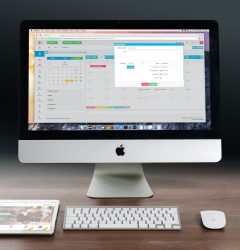
Enterprise Resource Planning (ERP) systems are at the heart of efficient operations. Traditional ERP systems have long been the go-to solution, but a new contender has emerged – cloud-based new generation ERPs. In this blog post, we’ll dive into the key differences between traditional ERPs and modern ones, highlighting how the cloud-based approach is revolutionizing the world of enterprise resource planning.
The Traditional ERP Dilemma
Traditional ERP systems have been the backbone of businesses for decades. They offer comprehensive solutions for managing various aspects of operations, including finance, human resources, inventory, and more. However, they come with their own set of challenges:
1. High Initial Costs
Implementing a traditional ERP system typically involves significant upfront costs for software licenses, hardware, and IT infrastructure.
2. On-Premises Complexity
Traditional ERPs are often hosted on-premises, requiring businesses to manage complex server rooms, backups, and maintenance.
3. Limited Accessibility
Accessing traditional ERPs remotely can be cumbersome and might require VPNs or remote desktop solutions, limiting flexibility.
4. Scalability Challenges
Scaling up or down with traditional ERPs can be a lengthy and costly process, making it challenging for businesses to adapt to changing needs.
Atracio: The Cloud-Based Solution
Atracio is part of the new wave of cloud-based ERPs, which are transforming the way businesses operate. Here’s how Atracio stands out in comparison to traditional ERPs:
1. Cost-Effective Deployment
With Atracio, the need for significant upfront investments in hardware and software licenses is eliminated. Businesses can subscribe to a cloud-based ERP, reducing initial costs and allowing predictable monthly payments.
2. Cloud Convenience
Atracio is hosted in the cloud, meaning that businesses don’t need to manage on-premises servers or worry about backups and maintenance. The cloud-based model offers scalability, allowing businesses to adjust resources as needed.
3. Anytime, Anywhere Access
Atracio provides real-time access to your ERP system from anywhere with an internet connection. This accessibility enhances flexibility and enables remote work capabilities, crucial in today’s dynamic business environment.
4. Rapid Implementation
Traditional ERP implementations can take months or even years. Atracio offers faster implementation times, getting your business up and running quickly.
5. Seamless Updates
Atracio handles updates and maintenance behind the scenes, ensuring that your ERP is always up-to-date with the latest features and security patches.
6. Enhanced Security
Atracio places a strong emphasis on data security, employing robust encryption and security protocols to protect your sensitive information.
The Future of ERP: Cloud-Based with Atracio
As businesses continue to evolve and embrace digital transformation, cloud-based ERPs like Atracio are becoming the go-to choice. They offer cost-efficiency, accessibility, scalability, and security, all while streamlining operations and ensuring that businesses can adapt to the ever-changing landscape.
In conclusion, the traditional ERP vs. Atracio cloud-based ERP comparison clearly demonstrates the advantages of a cloud-based approach. As businesses look to the future, embracing cloud-based ERPs like Atracio is the key to staying competitive, agile, and ready for whatever challenges lie ahead.
Recent Posts
Recent Comments
Categories

Transform your warehouses, fleet, and assets into a strategic advantage rather than an expense.


